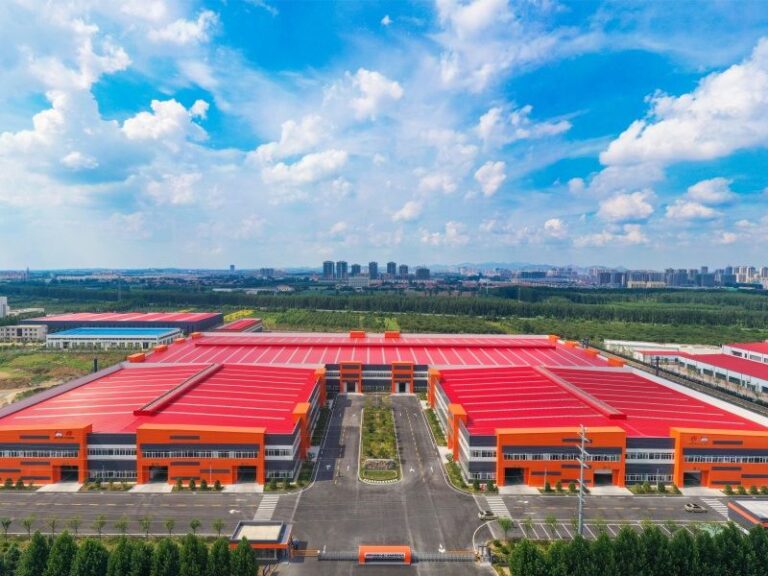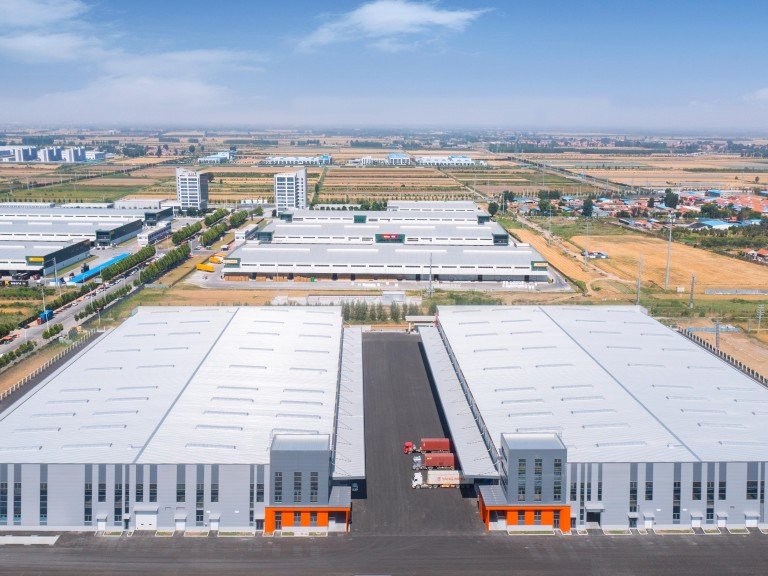Steel beams are an important part of modern building construction. Because steel beams are like the bones of the human body, they keep the structure of the building in a stable shape. In other words, steel beams support the building and keep it stable. Be it a skyscraper or an industrial or commercial building. Choosing the right steel beams is very important for the success and longevity of any building project.
Xinguangzheng is a professional prefabricated steel building manufacturers. We can provide solutions according to the needs of different building projects. In this article, we will introduce different types of metal steel beams, their uses, and their advantages in the construction industry.
You may need to know about the different types of steel beams and what makes them unique. This will help you make informed choices about structural design and building performance.
Table of Contents
What is a Steel Beam?
Steel beams are an important part of structural frameworks such as buildings and bridges. The load-bearing capacity of steel beams makes them the best choice for construction and infrastructure projects. As such, they are perfect for supporting floors and roofs.
Steel beams are usually made of structural steel. And structural steel is an alloy made from a combination of iron and carbon. So what is the standard for structural steel and how is it different from regular steel?
If the carbon content of steel is too high (0.30% to 0.60%), then it cannot be used as structural steel. Therefore the carbon content is reduced until it is between 0.05% and 0.25%. This carbon content provides high strength for structural steel.
What Are the Different Types of Steel Beams?
According to the different types of steel beams used in building construction, they can be categorized as follows:
W-type Steel Beams
W-type steel beams are steel beams with wide flanges, including the common I-beams and steel I-beams. Like I-beams, steel W-beams have a “web” and “flanges”. This makes them strong enough to withstand heavy loads over long distances. This is why W-beams, including steel W-beams, are often used in large construction projects such as tunnels, bridges, and buildings.
W-beams and I-beams are very similar in design. The main difference is the width of the flanges. steel W-beams have wider flanges, which have a slightly different shape and a stronger load-bearing surface. steel W-beams are ideal for heavy-duty projects. Because they have extra area, they do not bend easily.
T-beams
T-beams have a cross-section shaped like a T. They are commonly used for framing, repairs, and roof trusses. This is because they can withstand large loads well. In addition, T-beams are topped with flanges or compression members that can withstand compressive stresses. Vertical webs resist shear stresses and provide more significant separation for coupled bending forces.
In addition, the flanges form the top of the “T” beam. The rods, on the other hand, provide vertical support to it. Thanks to this structure, the T-beam can easily distribute heavy loads.
H-beam
An H-beam is a common structural beam. It is called “H-beam” because it looks like an “H” when viewed from the side. The main web of this type of beam is thicker and wider than an I-beam, but it is also heavier.
Because of its construction, the H-beam can carry more weight. This makes it ideal for heavy structures and high-rise buildings. In addition, H-beams have wider flanges and therefore a larger surface area, which is particularly good for spreading loads.
Due to these characteristics, beams can carry more weight than I-beams. For this reason, H-beams are commonly used in the construction of bridges and other buildings that require strong support both horizontally and vertically.

I-beams
The most common type of beam used in metal buildings is the I-beam, which is mainly made of iron. It is called a “universal beam” because it can support different types of weights. I-beams are the standard shape of structural steel and are the primary support structure in the construction industry. A steel beam for construction consists of horizontal flanges and a long vertical bar called the web. The fillet is the material that connects the web to the flange.
Depth is the distance from the top to the bottom of the I-beam and width is the length of the flange. And thickness is the thickness of the flange and the thickness of the web. Since the steel beams have flanges at the top and bottom, they prevent bending and increase the resistance of the web to blunt forces. These components can withstand maximum bending loads with minimum material and can also withstand heavy loads.
Channel steel (C-beam)
Channel steel beams are shaped like the letter “C” and are usually used as support beams where load bearing is not required. The open portion of this type of steel beam reduces its ability to resist twisting forces. However, for less heavy framing, channel beams are a good choice. For this reason, C-beams are commonly used in the framing of windows, doors, automobiles, and light building structures.
Box Beams
Box beams, also known as hollow sections (HSS), are square or rectangular beams closed on four sides. They have good resistance to twisting. Their closed structure makes them less susceptible to twisting and have the same strength in all directions. For example, box beams are commonly used as columns, support beams, and trusses in large buildings such as stadiums and warehouses.
Advantages of Using Steel Beams
Steel beams are widely used in many building construction projects. This is because they have many advantages such as:
Strength and Durability
Steel beams have exceptional strength compared to other building materials such as timber or concrete. They are strong enough to withstand huge loads and can withstand extreme forces such as wind, earthquakes, and heavy snowfall. This makes them a suitable building material for a wide range of situations.
Xinguangzheng can provide you with a sturdy and durable metal building. Many homeowners choose steel framed construction for hurricane proof buildings.
Corrosion Resistance
Modern steel beams are often coated with a protective coating to prevent rust. This makes them last longer, especially in industrial and outdoor environments.
Recyclable
Steel is easy to recycle, making steel buildings an environmentally friendly choice for green buildings. Recycling steel means that steel can be used for other purposes without losing any of its properties. This helps to protect the environment.
Fire Resistance
Fire safety is very important for people who use buildings. Unlike traditional building materials such as timber, steel beams are highly fire-resistant. In large commercial and industrial buildings where fire safety is very important, the fire protection of steel buildings keeps people safer.
Environmental friendliness
Over the years, the production of steel structures has become better for the environment, using less energy and polluting less. The use of steel beams also helps to make the construction industry more environmentally friendly as steel can be recycled.

Application of Steel Beams in Building Construction
The type of steel beam to be used depends on the structure of the building and the loads it has to bear. Let’s take a look at some of the common uses of steel beams in various construction applications:
Residential Construction
In residential construction, steel beams such as I-beams and H-beams are commonly used to support floors, ceilings, and roofs. For residential construction, beams need to be strong but not take up too much space. This is very important. For this reason, steel beams are ideally suited for residential construction.
- beams are often used to support modern homes. These homes have spacious, open floor plans that require less vertical support. Xinguangzheng can custom prefab metal buildings to meet specific design needs. This ensures a strong structure as well as an aesthetically pleasing building.
Commercial Buildings
Commercial buildings, such as shopping malls and offices, require steel beams to support the roof. Since steel beams can support large open areas without the need to add additional interior columns. Steel buildings are therefore well suited for the construction of clear span metal buildings projects.
For example, H-beams are often used to support large floor slabs in high-rise buildings. Channel sections, on the other hand, can be used to support lighter structural components. High-quality H-beams can handle the heavy loads and structural demands of industrial building projects.
Industrial Buildings
For industrial buildings such as factories and warehouses that require large spans and load-bearing capacity, steel buildings are the best choice. Box girders and H-beams are commonly used in these types of steel buildings. For example, large spans of roof trusses in buildings often use box girders because they are strong and do not bend easily.
Bridge Construction
Bridges require extreme strength and durability. Steel girders provide the necessary support to withstand static and dynamic loads. H-beams and box girders are widely used because of their high load-bearing capacity. For example, H-beams are commonly used to support the weight of automobiles and pedestrian walkways on overpasses and large suspension bridges.
Summary
Steel beams are strong, durable, and flexible, making them an important part of modern construction. If you choose the wrong support beams for a project, it can have a big impact on their workability and longevity. For architects and engineers, steel beams are the best choice. This is because they can withstand heavy loads, won’t rust, and help make buildings more environmentally friendly.





